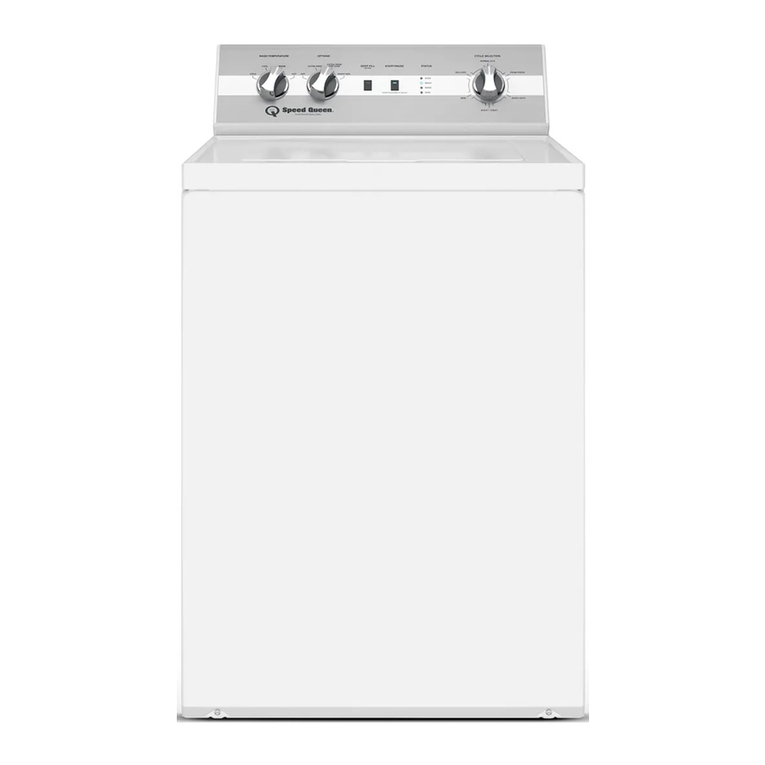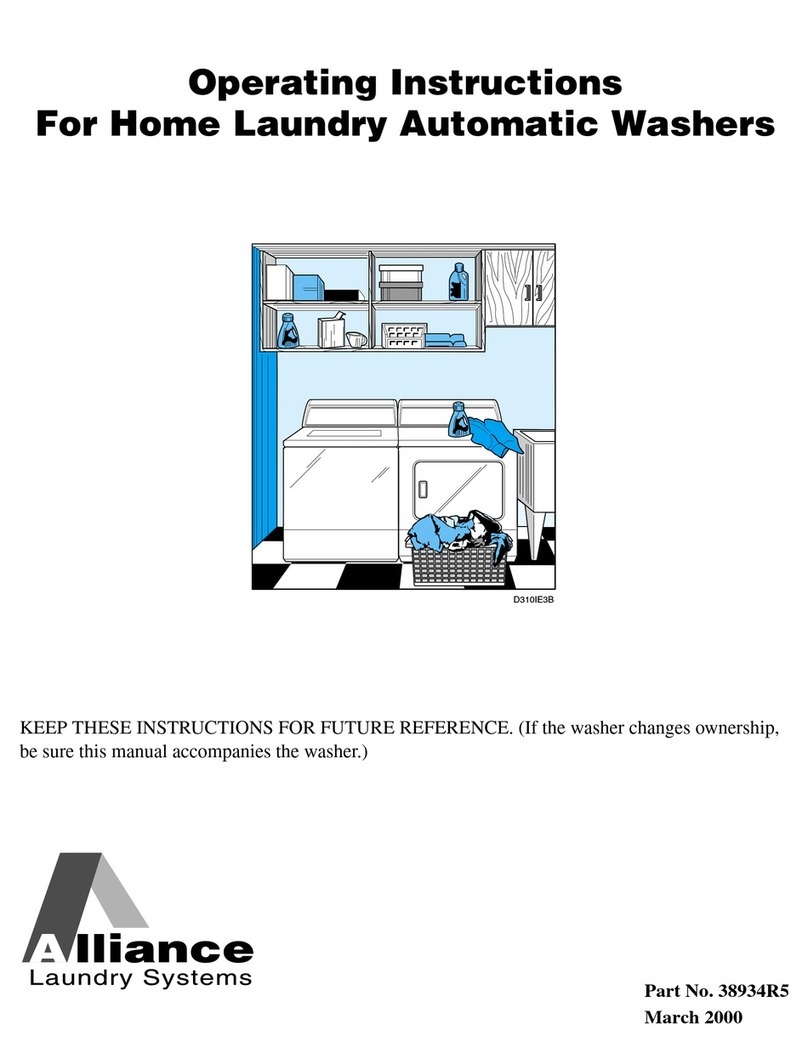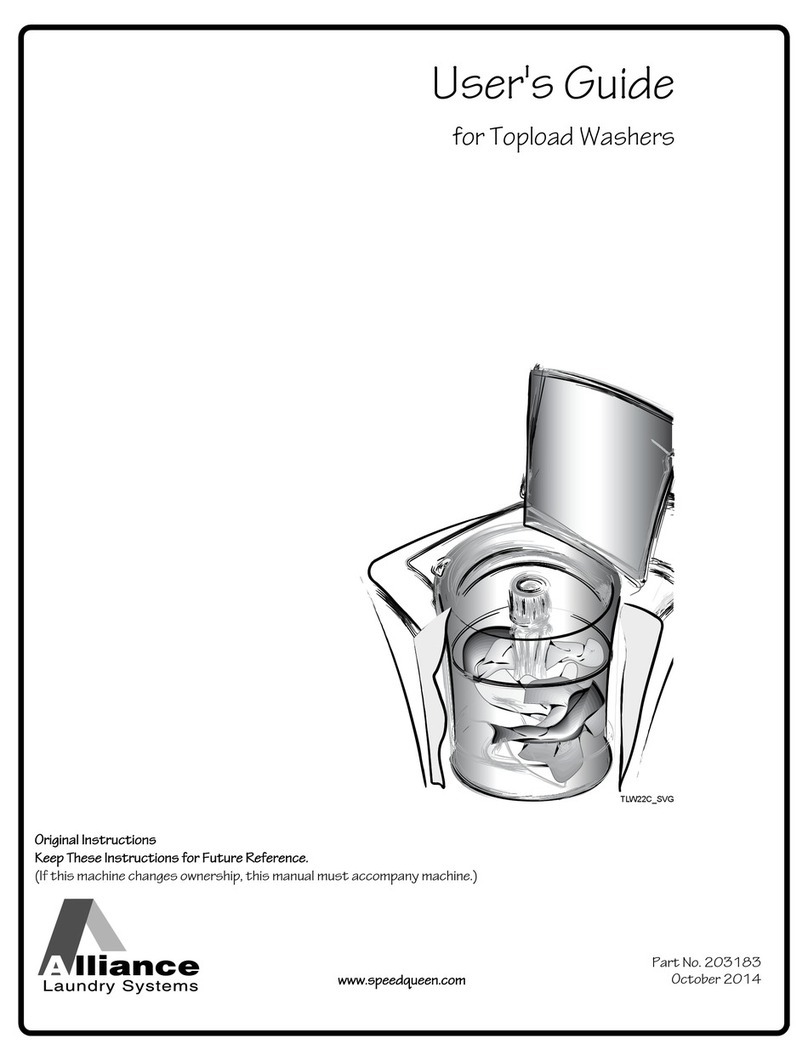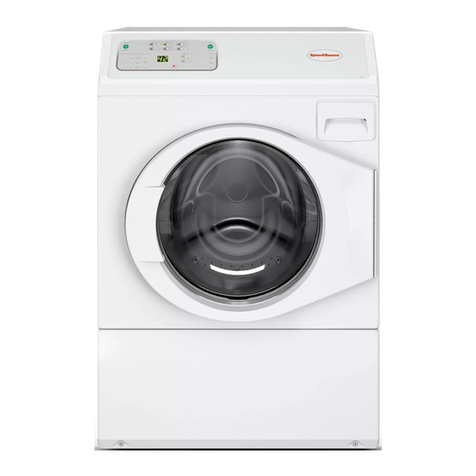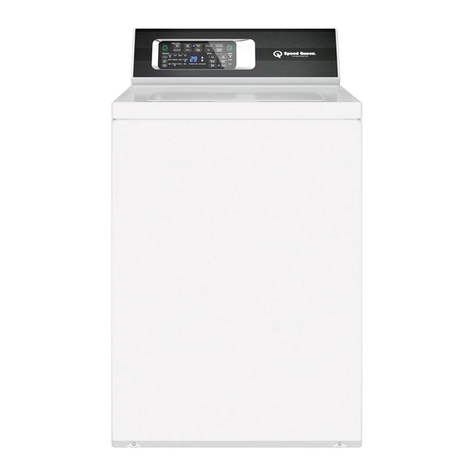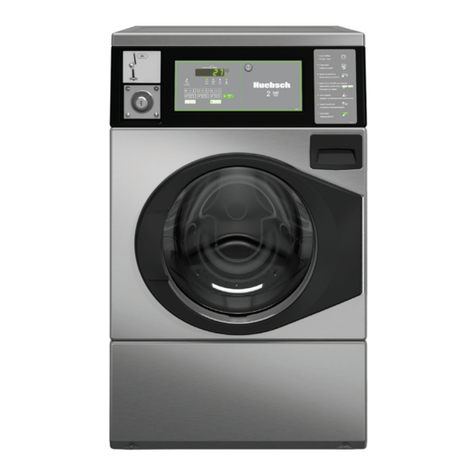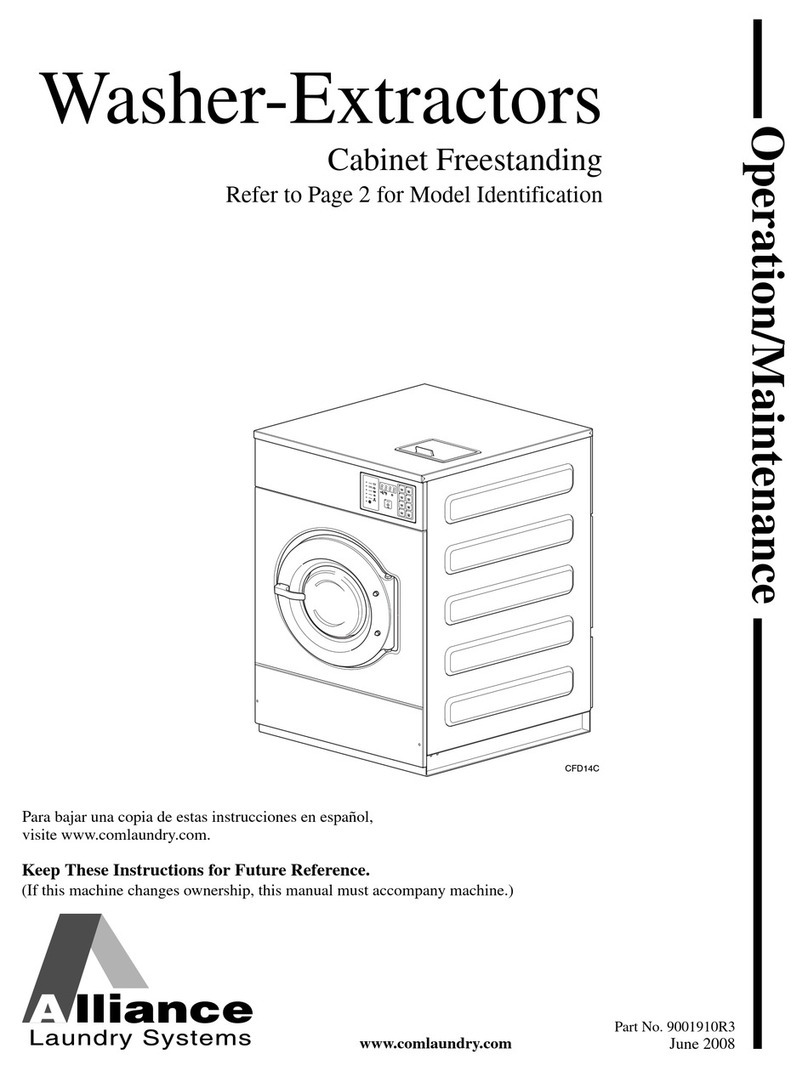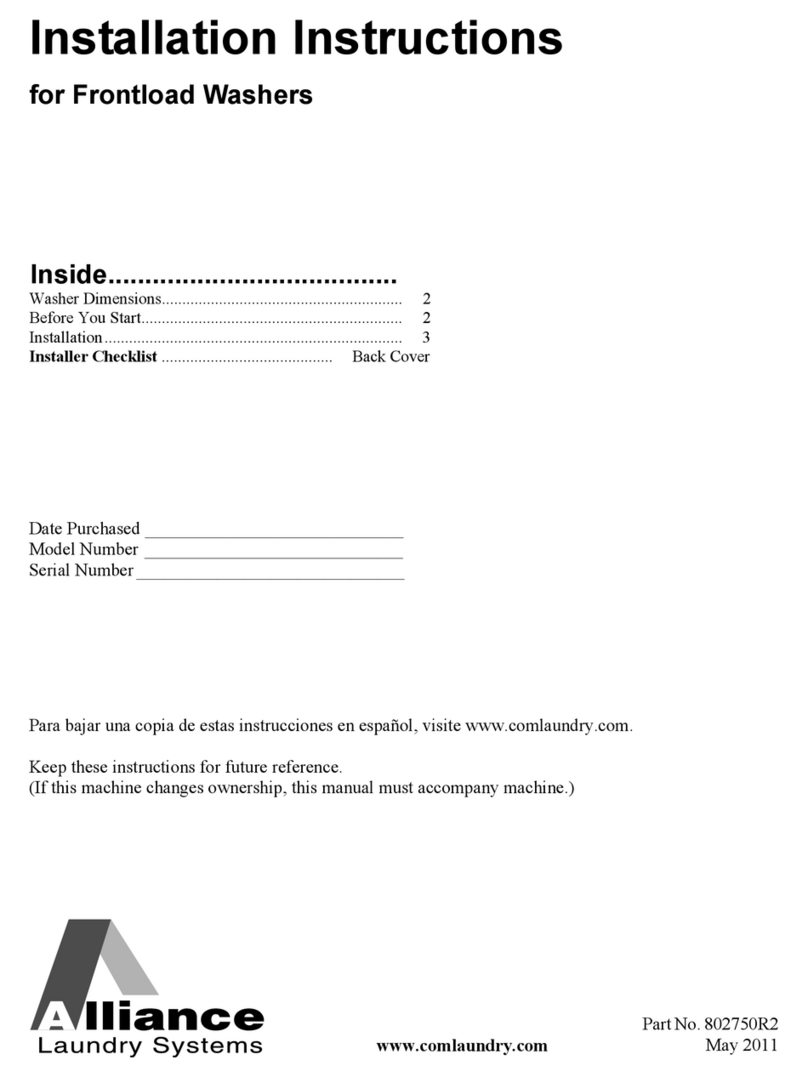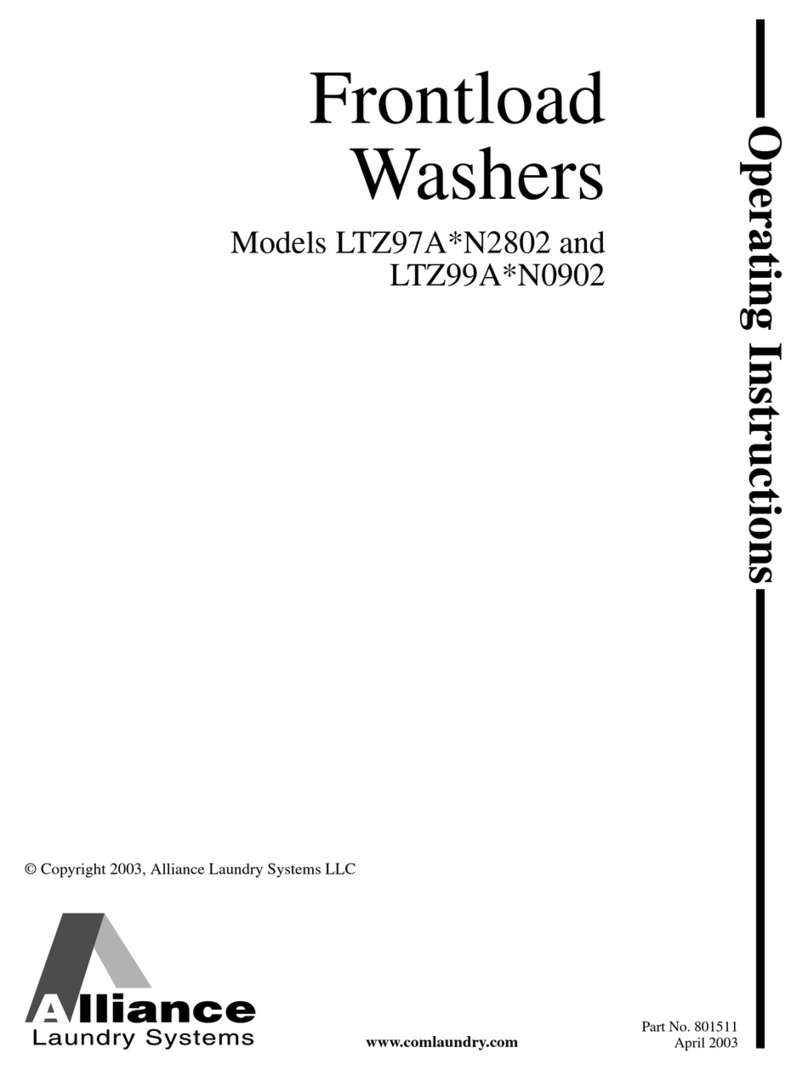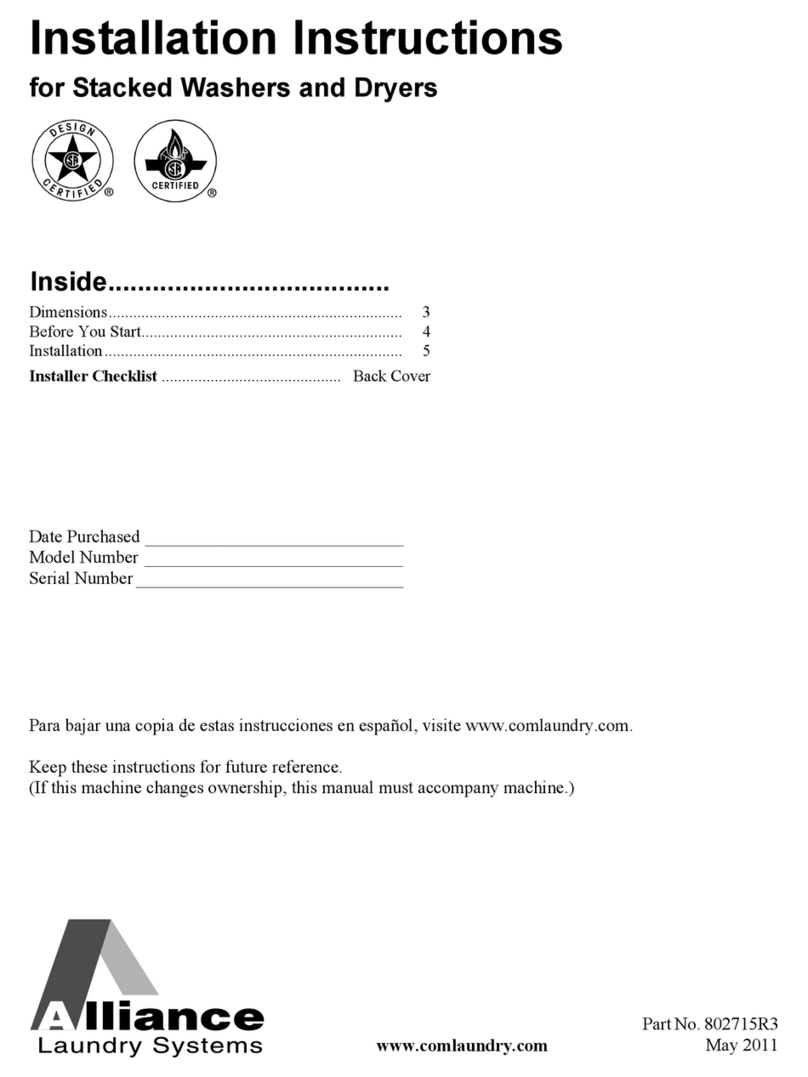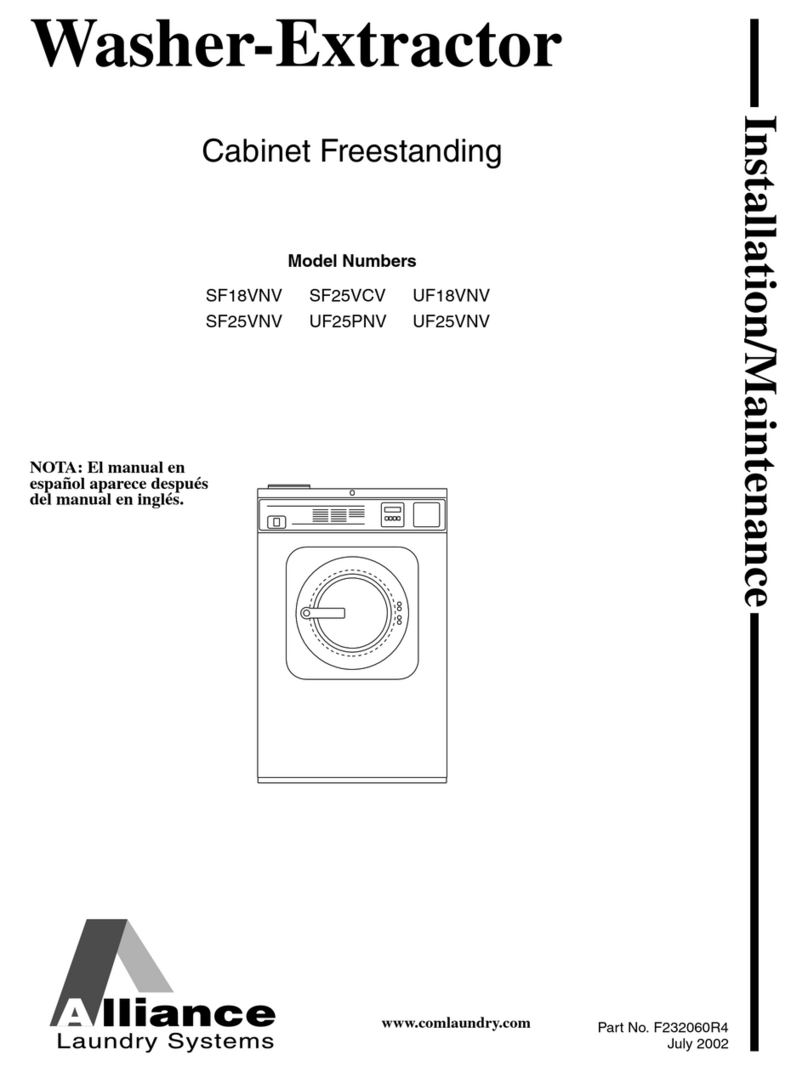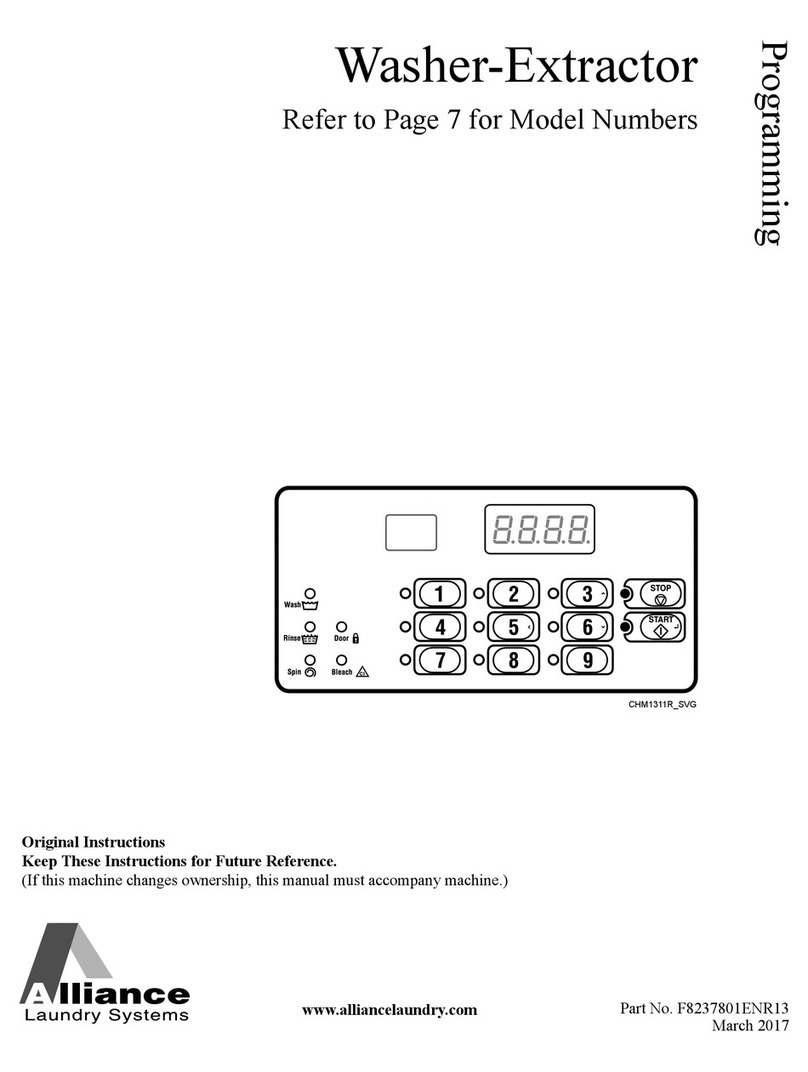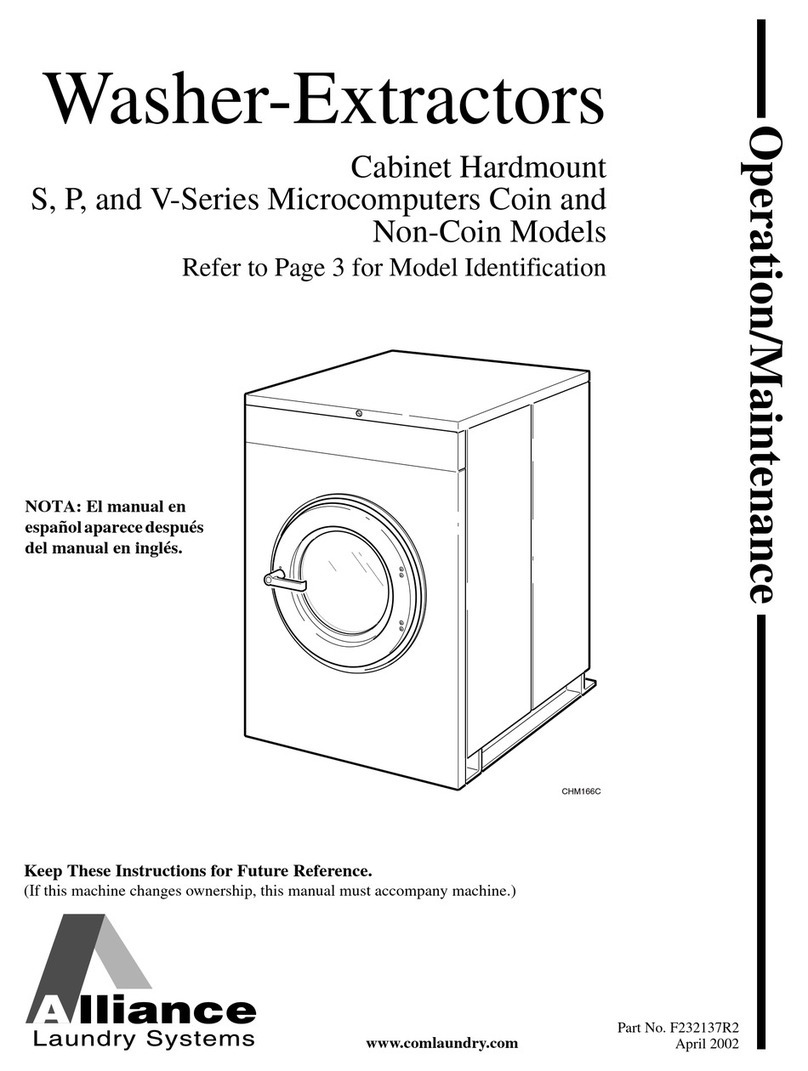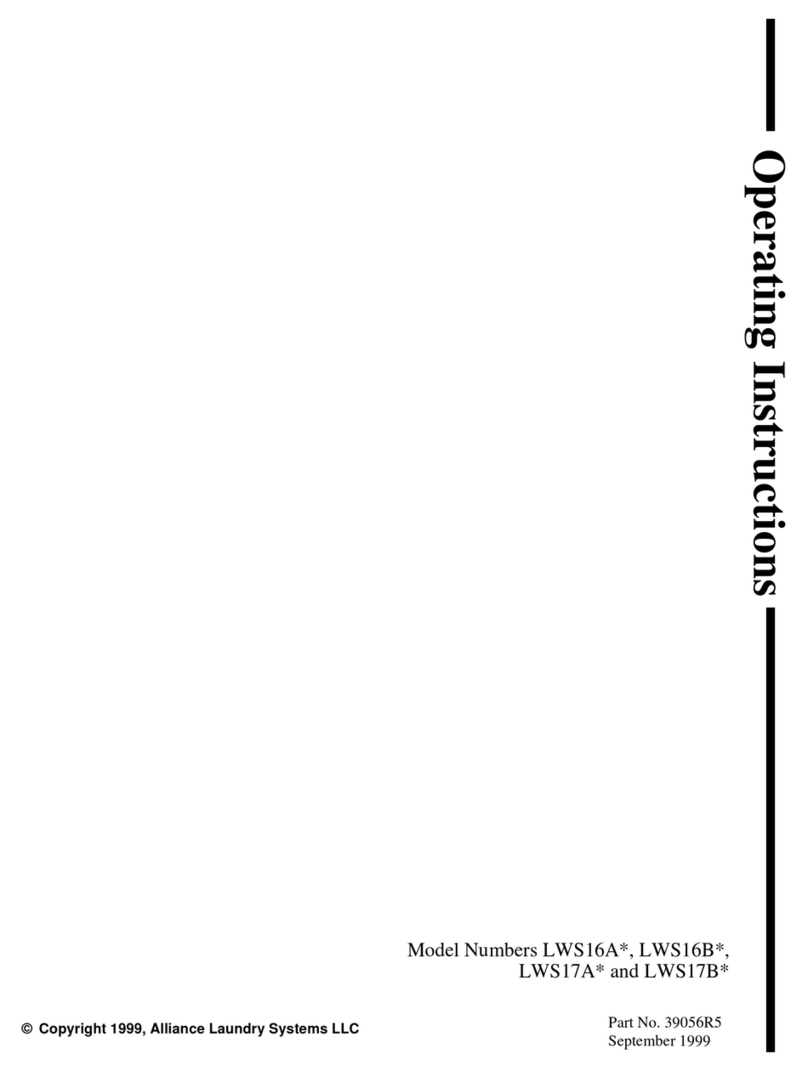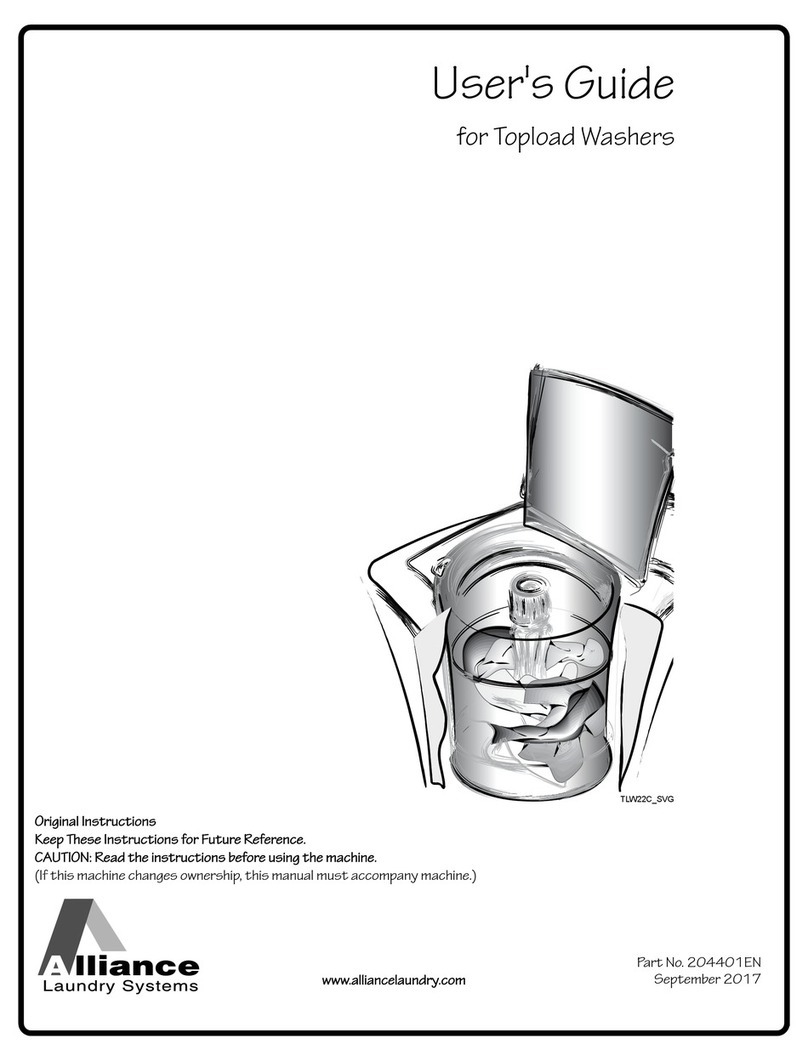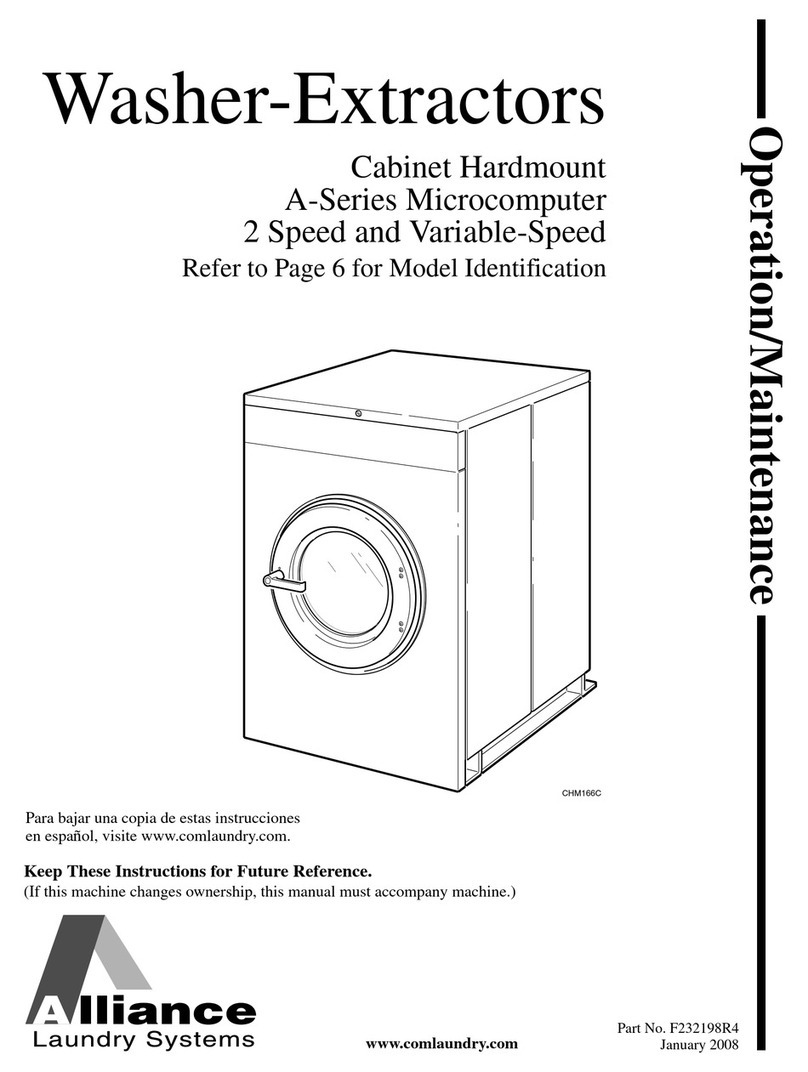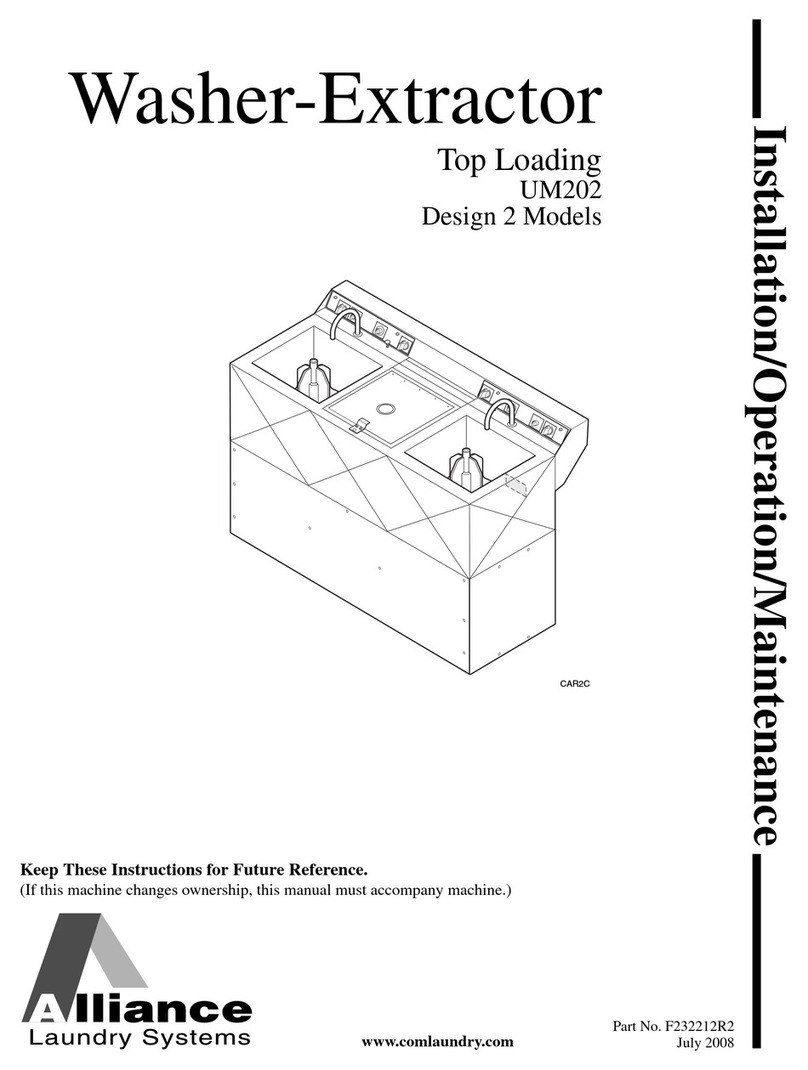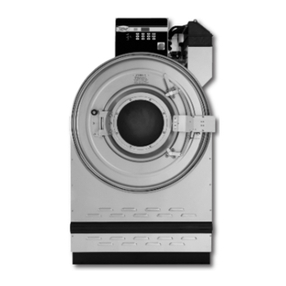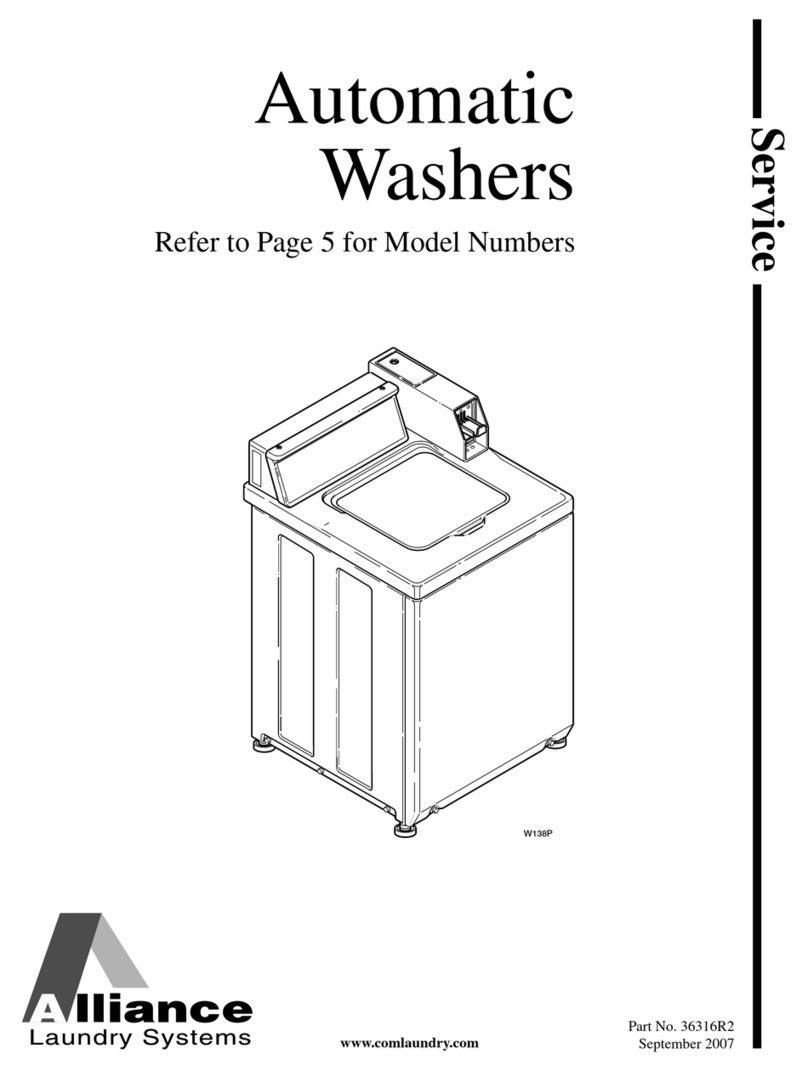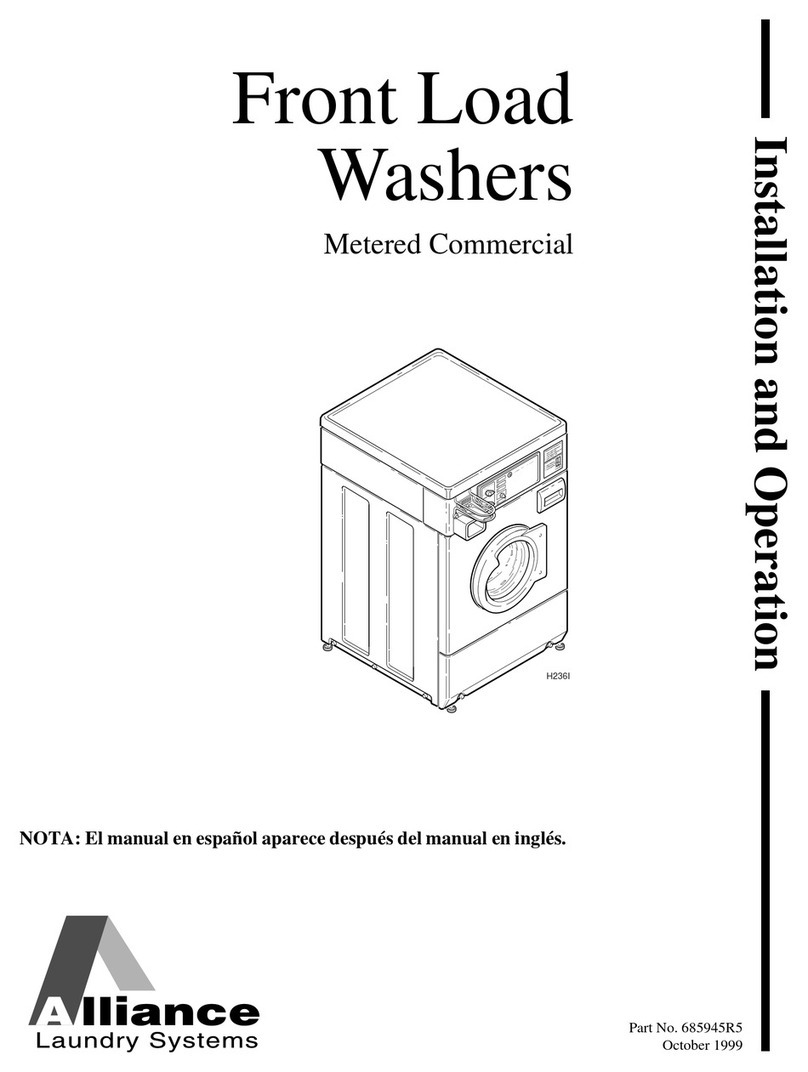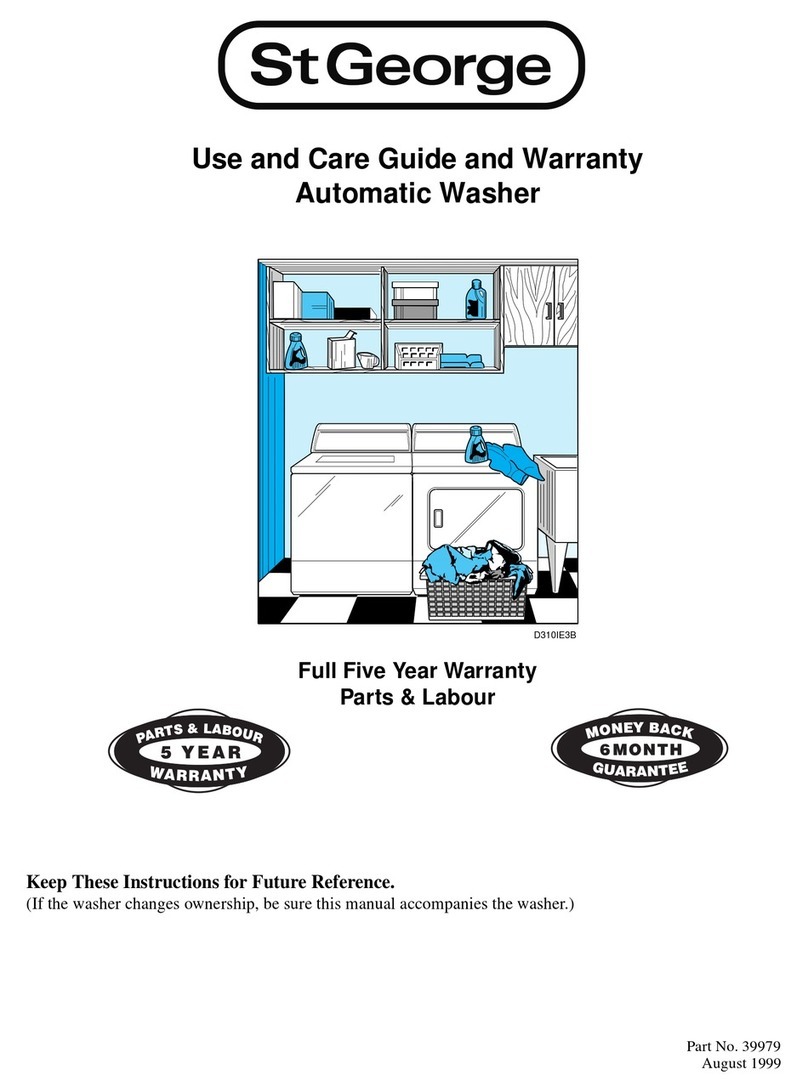
800383 1
© Copyright 2011, Alliance Laundry Systems LLC
All rights reserved. No part of the contents of this book may be reproduced or transmitted in any form or by any means without
the expressed written consent of the publisher.
© Copyright, Alliance Laundry Systems LLC – DO NOT COPY or TRANSMIT
Table of Contents
Model Identification ................................................3
Section 1 – Safety Information
Locating an Authorized Servicer ............................6
Section 2 – Introduction
Customer Service ....................................................7
Nameplate Location ................................................7
How Your Washer Works .......................................8
How Your Washer Works .....................................10
Section 3 – Troubleshooting
1. Troubleshooting coin drop .............................13
2. No Spin Condition – Models through
Serial No. 9811005967 ...................................18
3. Troubleshooting Knocking Noise ...................18
4. No motor rotation, or drive failure code
“E:DF” on electronic display units ..................20
Electromechanical Models
5. Start Up ..........................................................26
6. Start and Door Lock .......................................28
7. Fill Sequence ..................................................30
8. 20 Volt Control ..............................................32
9. 240 Volt Motor Power ...................................34
10. Timer Chart ..................................................36
11. Cycle Timer Motor Control Inputs ..............37
12. Cycle Timer Water Fill Input Logic ..............38
13. Washer “DC” Motor Functions .....................39
14. Control System Faults ....................................42
15. No Start on Coin Slide Front Control
Washers ...........................................................42
NetMaster Models
16. Microwand Does Not Communicate With
Control ...........................................................44
17. Coins Ignored When Entered .........................45
18. No Visible Display on Control ......................46
19. Washer Will Not Start – No Door Lock ........48
20. Washer Will Not Start – Control Analysis ....50
21. Washer Will Not Fill ......................................52
22. Washer Overflows .........................................54
23. Pump Does Not Operate ................................56
24. Door Locked, Motor Does Not Run (E:df on
display) ...........................................................58
MDC Models
25. Error Code Listing .........................................61
26. Coins Ignored When Entered .........................62
27. No Visible Display on Control ......................64
28. Washer Will Not Start – No Door Lock ........66
29. Washer Will Not Start – Control Analysis ....68
30. Washer Will Not Fill ......................................70
31. Washer Overflows .........................................72
32. Pump Does Not Operate ................................74
33. Door Locked, Motor Does Not Run (E:df on
display) ...........................................................76
Section 4 – Grounding
34. Wall Receptacle Polarity Check ....................79
35. Machine Ground Connections - Front Control
Washers (Electromechanical Models) ...........80
36. Machine Ground Connections - Rear Control
Washers ..........................................................82
Section 5 – Service Procedures
37. Control Panel (Electromechanical Models) ...85
38. Control Panel (Electronic Control Models) ...86
39. Control Panel Overlay (Electromechanical
Models) ..........................................................91
40. Control Panel Overlay (Electronic Control
Models) ..........................................................92
41. Cabinet Top ....................................................94
42. Pressure Switch ..............................................99
43. Motor Control Board ...................................100
44. Timer Assembly ...........................................101
45. Control Cabinet Front ..................................103
46. Coin Drop ....................................................104
47. Card Reader .................................................112
48. Control Cabinet Wrapper .............................113
49. Relay ............................................................113
50. Electric Drain Pump .....................................115
51. Belt ...............................................................116
52. Mixing Valve ..............................................118
53. Front Panel ...................................................121
54. Loading Door ...............................................123
55. Door Seal and Hose Assembly ....................124
(continued)
